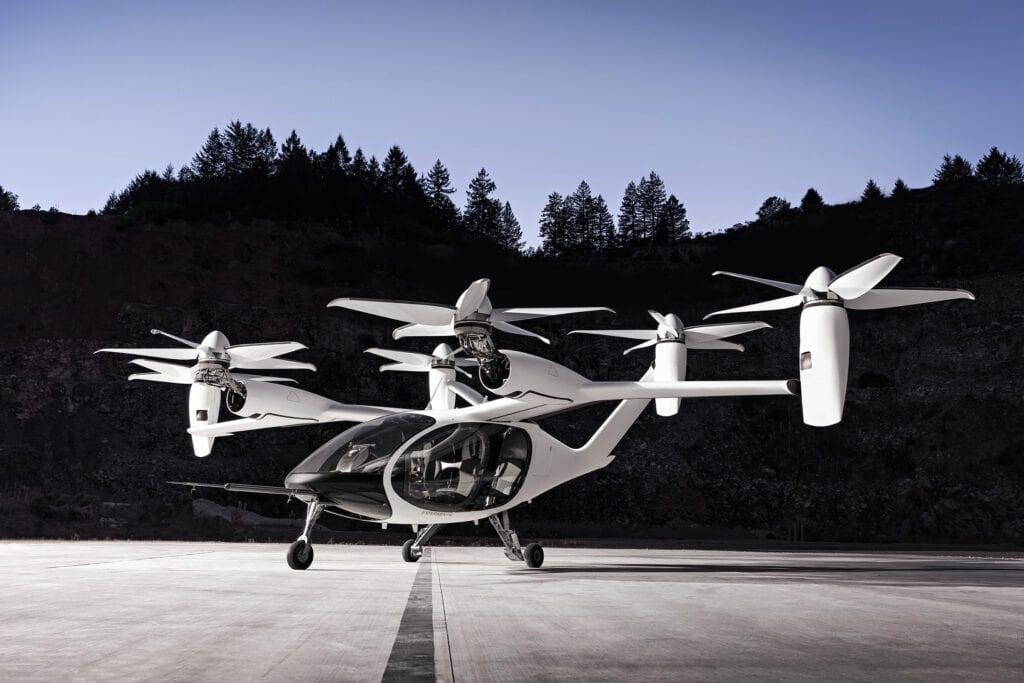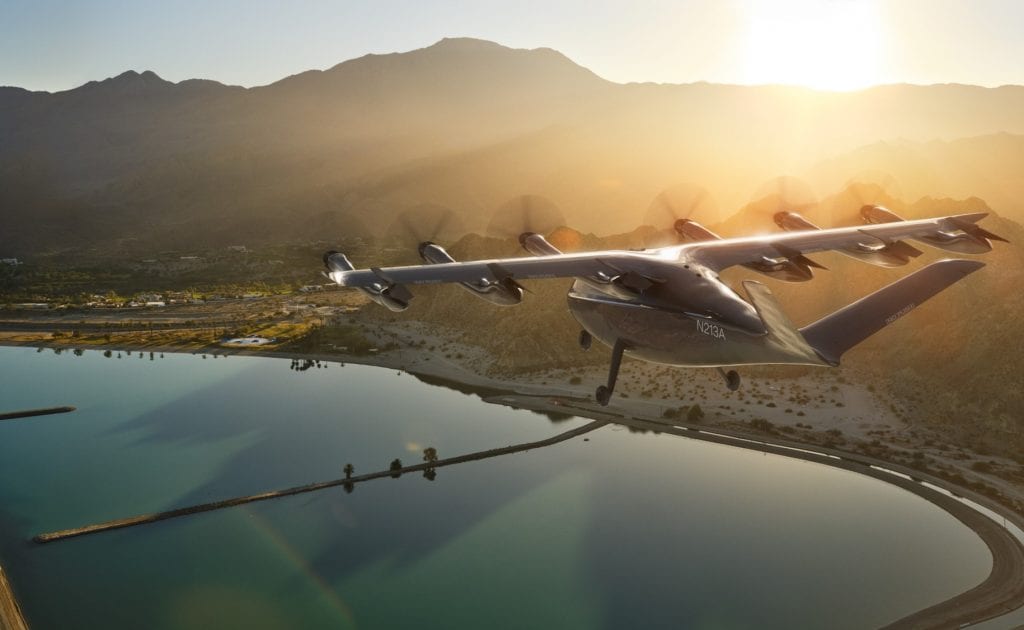eVTOL Certification: Where Are They Now and the Challenges that Still Lie Ahead


Joby Aviation received the first military airworthiness for an electric vertical take-off and landing (eVTOL) vehicle from the AFWERX Agility Prime program. (Joby Aviation)
There are questions about how realistic the predictions are concerning the commercial launch of electric vertical take-off and landing (eVTOL) aircraft in the next three to four years. While there are many factors that will determine if these timelines prove accurate, certification from regulatory bodies will be the deciding factor.
At a panel discussion during the Vertical Flight Society’s Forum 77 on May 13, experts from regulatory bodies and eVTOL manufacturers provided an update about the path eVTOL aircraft could take to achieve certification and what challenges still lie ahead.
One reason some people may be skeptical about how quickly eVTOL manufacturers are attempting to certify their aircraft is that the process is moving significantly faster than previously done in the industry.
“It took the airline industry almost 100 years to get to the level of safety, utility, and efficiency they have today and we’re trying to do it in about one-tenth of that time,” Lowell Foster, director of global innovation and engineering at GAMA, said.
Foster said the aspects of developing an aircraft must be done in parallel with each other instead of one at a time.
“We’re going to have to do everything in parallel. It’s a pretty big challenge, right,” Foster said. “Historically, you would certify the aircraft and would go through the pilot training, then you’d figure out how to operate it, and the infrastructure would follow. We don’t have that luxury today. We really need to be able to start operating these vehicles, as soon as they’re PC’d [part certified] which means we’ve got to work the training and the operations concurrently with certification. Furthermore, you know, if, we get these vehicles ready to fly and we don’t have the infrastructure, aerospace operations could be severely limited. So, it really is important we look at all these different aspects from a parallel approach.”
Several eVTOL aircraft manufacturers are currently coordinating with the Federal Aviation Administration (FAA) and the European Union Aviation Safety Agency (EASA) to find a path to certification. While eVTOL aircraft are unique, they also have aspects that allow them to take advantage of previous certifications.
“All the VTOL projects are using performance-based requirements in their cert. [certification] bases, which is a big benefit because it lets the authorities leverage means to compliance for all kinds of new technology and innovation,” Foster said. “The other good thing is that almost two-thirds of the existing means of compliance are already applicable. We are only looking at new areas for about a third of that.”
Archer Aviation’s eVTOL aircraft will use a blend of current FAA Part 23, 27, 33, 35, and 36 requirements, Eric Wright, head of certification at Archer, said. The areas where the aircraft differs from available certification requirements include unique aircraft configurations, electric distributed propulsion, energy storage and distribution systems, high voltage architecture, fly-by-wire flight control systems, advanced or automated systems, crashworthiness requirements, and noise standards.
“How are we dealing with these issues? Essentially these additional certification considerations are being dealt with by issue papers, for the most part, with all of these new and novel topics essentially being addressed through presentation of design application of standards and then regulatory collaboration,” Wright said. “There are white papers to bring up the understanding of the regulator with detailed system descriptions, and so the regulators get a good understanding of what those systems do and what other systems they talk to.”
Wright said there has been good progress with special conditions and provided the example of provisions under the FAA’s Part 41 for electric propulsion.

Archer Aviation’s eVTOL aircraft will use a blend of current FAA Part 23, 27, 33, 35, and 36 requirements. (Archer Aviation)
EASA is working on special condition VTOL (SC VTOL) means of compliance (MOC) to certify eVTOL aircraft. This process began in 2019 and is currently in phase three, David Solar, SC-VTOL lead at EASA, said. In the first two phases, the MOC addressed fly-by-wire systems, validation loads for structures, and design requirements. In phase three, which will be presented to the public later this year, Eurocae standards will be released as well as operational aspects including the development of the first EASA qualified virtual reality simulators.
One path that eVTOL manufacturers, like Joby Aviation, are choosing to take involves creating an aircraft that needs minimal exemption to currently available certifications.
“We have chosen a path that fits through the type certification path with minimal need for exemption, through the flight pilot training and qualification path through the operational path and into the airspace integration path,” Greg Bowles, head of government affairs at Joby Aviation, said.
Bowles said this thought process led them to decide to include a pilot onboard instead of building a fully autonomous aircraft like some other companies.
“Having a pilot onboard allows us to take advantage of the existing air traffic control system, the voice communication path, it allows us to use the pilot’s traditional skills for detect and avoid,” Bowles said. “There are a whole number of technologies that aren’t actually needed to mature yet with a pilot on board.”
Joby has also classified its eVTOL with the FAA as an airplane that can take off and land vertically, Bowles said.
“So, if you think of something like an F-35, that’s an airplane,” Bowles said. “We would look at that and not say that’s a rotorcraft vehicle, we would look at that and say, oh, that’s an airplane, and it can also perform vertically.”
While these achievements mean the certification process for eVTOL aircraft is moving forward, experts expressed there are still hurdles before they can reach the finish line.
Near-term challenges could include the use of fossil fuel certification approaches for electric propulsion aircraft, Foster said.
“We’re still seeing the use of the fossil fuel mentality when we approach electric propulsion,” Foster said. “…The concern here is that we may miss an electric specific safety issue because we’re so focused on legacy.”
Another problem could be regulatory agencies’ tendency to be too conservative when considering new technologies, Foster said.
“The general tendency is for authorities to approach new technology from an absolute versus relative safety perspective,” Foster said. “…The problem with the tendency to lockstep to absolute safety is, it can present a disincentive to putting new safety devices on aircraft because of the additional costs and the additional timeframe that might be there and uncertainty too.”
Creating a certification for the use of automation could also prove to be an obstacle.
“The extensive use of automation for not just flight controls but for distributed electric propulsion and also where we’re replacing traditional pilot tasks with automation the complexity level is very high and we may need a new approach here instead of just the traditional Part 25/29 legacy approach,” Foster said. “As we get into higher levels of automation, we really have the potential to make aircraft a lot safer and maybe more human error tolerant too. We probably need to be looking at a new approach to systems or maybe a new architecture to really leverage that and so we don’t want to get too locked into legacy approaches develop in the 70s.”
Bowles said all the new technological developments might be a challenge as companies are developing.
“We get very excited right now in aviation because we’re in such a technological change,” Bowles said. “And as this evolution is happening, there are going to be infinite opportunities, and frankly that’s why there’s so much excitement around the world for this space. But the good news is we don’t want to lose sight of the path that’s right in front of us that we can execute on in the short term and how that evolves into all those different directions.”
The post eVTOL Certification: Where Are They Now and the Challenges that Still Lie Ahead appeared first on Aviation Today.
Check FastApn access for commercial satcoms at Fastapn
Flytlink – Avionics, Satcom’s and IFE Consultants






